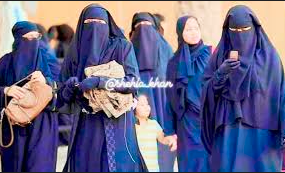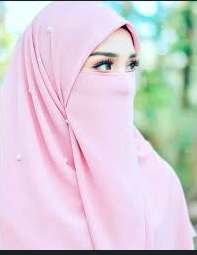Beauty of Hijab and Islam
Introduction
The beauty of hijab and Islam lies in the harmony between faith, modesty, and inner peace. The hijab is more than a simple piece of fabric; it represents an act of devotion, dignity, and empowerment for Muslim women. In Islam, beauty is not defined by outward appearance but by inner character and spiritual purity. The hijab stands as a symbol of that divine beauty — one that radiates from the heart and soul.
In a world driven by fashion trends and external validation, the hijab provides a refreshing reminder that self-worth is rooted in values, not appearances. This article explores the profound meaning behind the hijab, its connection to faith, and how it represents the timeless beauty of Islam.
Understanding the Concept of Hijab in Islam
The Arabic term hijab translates to “cover” or “barrier.” In Islamic teachings, it embodies the broader principle of modesty for both men and women. However, for women, the hijab also takes a physical form through modest dress, reflecting inner piety and respect for oneself and others.
The Purpose of Hijab
- Obedience to Allah: The hijab is a commandment from Allah, serving as an act of worship and submission.
- Protection and Dignity: It protects a woman’s modesty and ensures she is respected for her intellect and character.
- Identity and Empowerment: Wearing the hijab allows Muslim women to confidently embrace their faith and identity.
The hijab is not a symbol of restriction but of liberation — freedom from societal pressures that define beauty through appearance alone.
The Beauty of Hijab and Islam: A Spiritual Reflection
The beauty of hijab and Islam reflects spiritual strength and self-respect. Islam teaches that beauty lies within the purity of the heart, and the hijab becomes an outward expression of that inner faith.
1. Modesty as a Form of Beauty
True beauty is not in revealing but in concealing. Modesty protects a woman’s dignity and enhances her value in the eyes of Allah. It shifts attention from physical charm to inner virtues such as kindness, sincerity, and humility.
2. A Sign of Faith
The hijab is an act of devotion that strengthens the bond between a woman and her Creator. It constantly reminds her of her faith, purpose, and spiritual values.
3. Confidence Rooted in Faith
Contrary to misconceptions, the hijab empowers women. It gives them confidence to define beauty on their own terms and the courage to stand by their beliefs in a world full of judgment.
Psychological and Emotional Benefits of the Hijab
Beyond its religious symbolism, the hijab also offers emotional and psychological peace.
1. Liberation from Unrealistic Standards
In a society that often pressures women to meet impossible beauty ideals, the hijab brings freedom. It shifts focus away from physical appearance, reducing stress and boosting self-esteem.
2. Inner Peace and Focus
The hijab fosters mindfulness and spiritual awareness. It reminds women of their higher purpose — to please Allah — which leads to mental calmness and inner harmony.
3. Sense of Belonging
Wearing hijab connects Muslim women with their faith community, providing a sense of unity and shared identity worldwide.
Hijab and Modern Life
The beauty of hijab and Islam has gracefully adapted to modern times. Today, hijabi women are thriving in every profession — from medicine and education to business, media, and sports — while staying true to their faith.
1. The Rise of Modest Fashion
The global fashion industry has embraced modest clothing, giving rise to “modest fashion” lines. Brands like Nike, H&M, and Dolce & Gabbana have designed hijab-friendly collections, proving that modesty and style can coexist.
2. Breaking Stereotypes
Hijabi women are breaking cultural barriers and challenging misconceptions. They are living proof that wearing hijab does not hinder ambition or creativity but enhances it with faith and confidence.
3. Representation in Media
From journalists to athletes, hijabi women are representing Islam positively in the global spotlight, showing that modesty is empowering, not limiting.
The Hijab and the Moral Structure of Society
The hijab not only benefits the individual but also contributes to the moral strength of society.
1. Promoting Respectful Interaction
By encouraging modesty, hijab ensures interactions between men and women are based on respect, intellect, and morality, rather than physical appearance.
2. Protecting Dignity
It prevents objectification and helps uphold the dignity of women, promoting a culture that values personality and ethics over looks.
3. Encouraging Social Harmony
A society that values modesty naturally nurtures respect, compassion, and equality among its people — principles that are at the core of Islam.
The Beauty of Hijab Through the Eyes of Faith
Islam views the hijab as an adornment of the soul rather than a restriction of the body. It teaches lessons of humility, patience, and obedience that enrich a believer’s spiritual journey.
Lessons the Hijab Teaches
- Faith: The hijab is an expression of trust in Allah’s guidance.
- Discipline: It teaches self-control and awareness of one’s actions.
- Humility: It reminds believers to prioritize spirituality over materialism.
- Strength: It empowers women to stay true to their beliefs despite societal pressure.
Practical Tips for Embracing the Hijab
For women considering wearing the hijab, it’s important to approach it with sincerity and understanding.
1. Learn the Meaning
Study the Qur’an and Hadith to understand the spiritual significance of hijab. When knowledge strengthens belief, the practice becomes heartfelt.
2. Start Gradually
It’s okay to begin with small steps — such as dressing modestly before fully covering — as long as the intention is sincere.
3. Choose Your Style
Hijab can be elegant and personal. Explore various fabrics, colors, and wrapping styles that balance modesty with self-expression.
4. Seek Support
Surround yourself with supportive friends, family, and community members who encourage your spiritual journey.
5. Stay Confident
Confidence comes from understanding that hijab is a symbol of pride, not pressure. Every day you wear it with sincerity, you earn blessings and peace.
Parents’ and the Community’s Role in Encouraging the Hijab

Parents and community leaders play a vital role in fostering a love for hijab and faith among young girls.
- Teach with Love: Explain the beauty and purpose of hijab gently, emphasizing faith and self-respect rather than enforcing it.
- Create Role Models: Introduce inspiring examples of hijabi women who have achieved success while upholding Islamic values.
- Promote Positive Spaces: Encourage community programs, workshops, and modest fashion events that celebrate the hijab and its values.
When hijab is taught as a source of pride and faith rather than obligation, it blossoms naturally from the heart.
Universal Message of the Hijab
Though rooted in Islam, the message of hijab transcends religion. Its emphasis on modesty, respect, and dignity reflects universal moral values.
The beauty of hijab and Islam reminds us that true empowerment is not in revealing oneself but in controlling one’s image with faith and wisdom. It is a statement of independence — a declaration that a woman’s worth is defined by her morals and intellect, not her appearance.
Conclusion
The beauty of hijab and Islam is timeless. It represents purity, devotion, and strength — values that never fade. The hijab is not merely an article of clothing; it’s a symbol of identity, faith, and the deep connection between a woman and her Creator.
In Islam, beauty is a reflection of the soul. The hijab serves as a crown of faith, a shield of dignity, and a manifestation of inner peace. By embracing it, women affirm that their value lies not in how the world perceives them but in how Allah guides them.
Indeed, the beauty of hijab and Islam lies in its ability to blend modesty with strength, simplicity with grace, and faith with empowerment.
5 Frequently Asked Questions (FAQs)
1. Why is the hijab important in Islam?
The hijab is important because it signifies modesty, faith, and obedience to Allah. It helps maintain dignity and respect in society.
2. Does hijab oppress women?
No. The hijab empowers women by freeing them from societal beauty standards and allowing them to be valued for their character and intellect.
3. Can hijab be fashionable?
Yes, hijab can be both modest and stylish. Many women express creativity through modest fashion that aligns with Islamic principles.
4. What should I do if I face challenges wearing the hijab?
Stay strong in your faith, seek support from others, and remember your purpose — to please Allah and represent your beliefs with pride.
5. Is hijab only about covering the head?
No. Hijab also represents modesty in speech, behavior, and actions. It is a complete way of life that reflects humility and respect.




